About Our Home
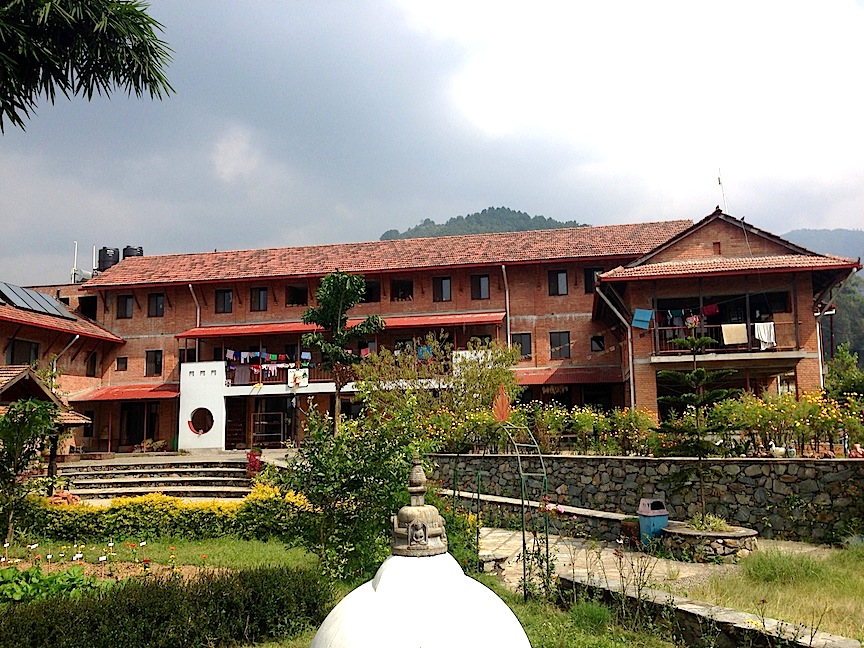
After nine years of living in a crowded rental building, the permanent home for Ama Ghar, funded by private donations, was completed in 2010. Our home can accommodate up to 75 children.
Children-Centered Design
When designing our home, how the children would live in it was forefront in our minds. We considered traffic patterns, kids’ movements, and the various activities happening inside and outside the home.
Open and Adaptable Living Spaces
Our home has a lot of large open spaces so the kids have physical freedom to explore, play, and study. We have one main room downstairs where the kids can dance, play, and host performances. This is also where the kids eat dinner and meditate nightly. Nearby, we have a study rooms, a sewing room, and a first aid room.
We have wide staircases to ease the flow of traffic and a large open kitchen where the kids can learn how to cook. The home was also designed to be easy to clean and maintain – which is critical when raising over 45 children!
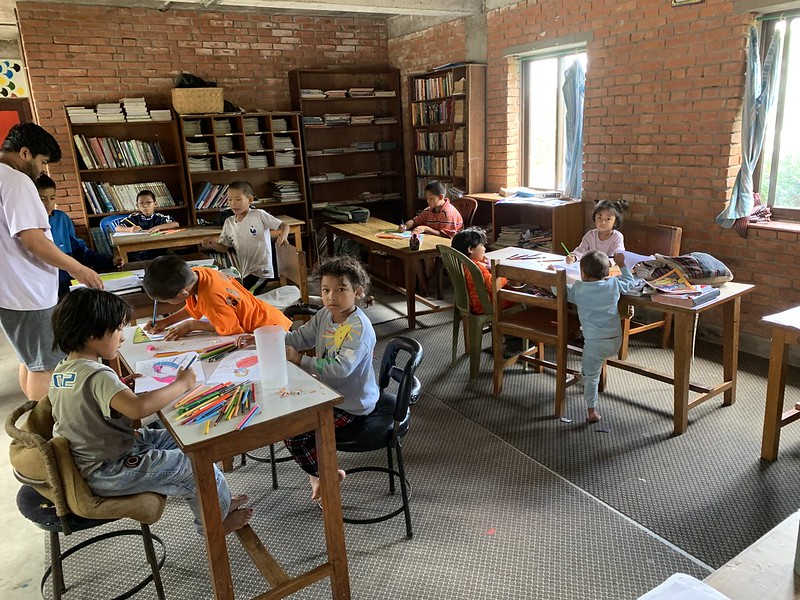
Our home was also designed so that we can adapt as the children inside grow and change. For example, a space that was once a play area can easily be converted into a study zone.
The walls are covered with photos of the children and their artwork. Step inside Ama Ghar, and you know that kids live here!
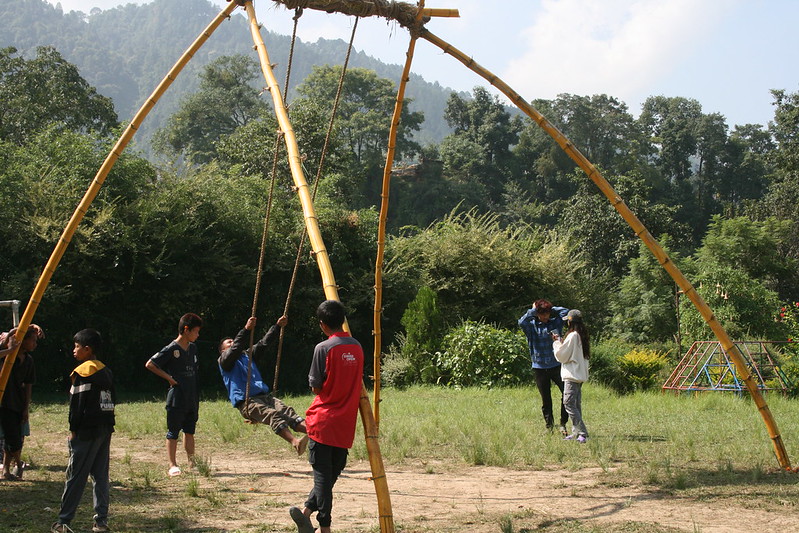
Outdoor Space
Much like our indoor space, our outdoor space was designed to give the children the freedom to roam and explore. We have a lot of outdoor space, with room for a playground, football field, table tennis, and a trampoline. We have a large field with space to erect our swing for Tihar, and we also have organic gardens on our land where the kids learn to grow our own fruits and vegetables. The fruit trees have an added bonus – they are great for climbing!
Our Sustainable Home
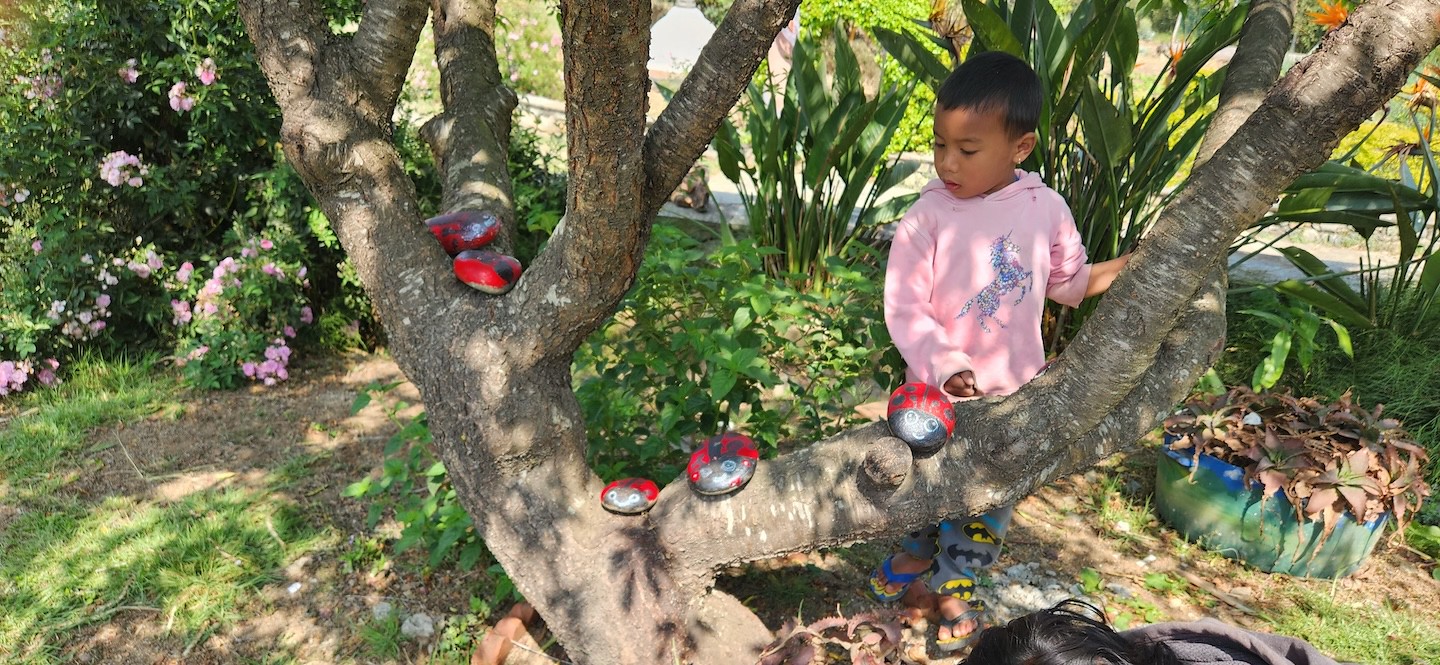
“Using our resources wisely first means to be eco friendly but the other good reason is to save money on utilities, which in turn frees up money for other necessities like food and educational expenses.”
– Bonnie Ellison, Country Director at Ama Ghar
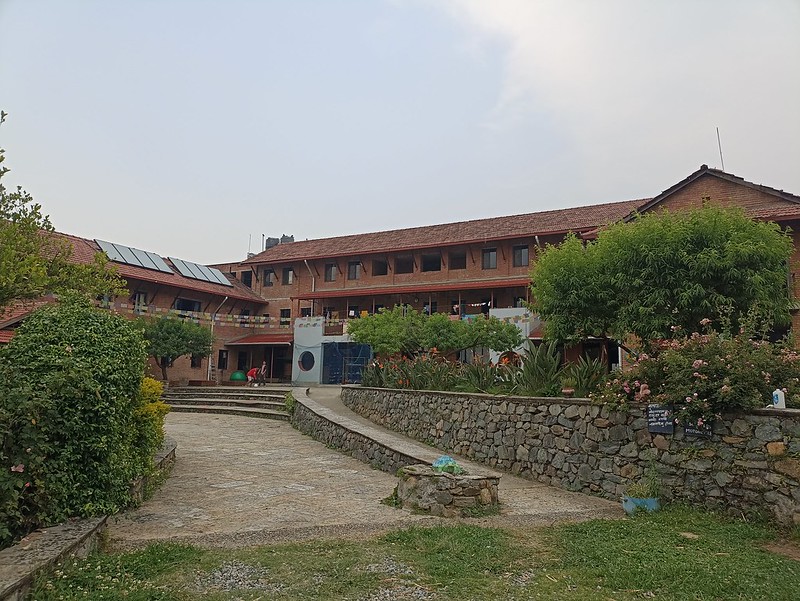
Solar Power
The home has a 2.2 KW photo-voltaic array on the roof that keeps Ama Ghar brightly lit at night, even during power outages. A relay switch flicks the circuit to solar when the power goes off. The home often uses solar power even when there is electricity from the main supply to save on the utility bill.
Using Rainwater
Wastewater Treatment
Ama Ghar also has a decentralized water treatment system that treats wastewater through a filtration system. A planted gravel filter treats excess water before it is discharged into the stream flowing nearby. Water that leaves Ama Ghar is tested regularly by the Environmental and Public Health Organization that runs a government accredited laboratory for testing and environmental analysis. The most recent tests have found that the water is more than suitable to travel back to the river. Solid waste at Ama Ghar is either composted into fertilizer or piped into an underground digester which generates methane that can be used for cooking, thus reducing dependence on expensive LPG.
